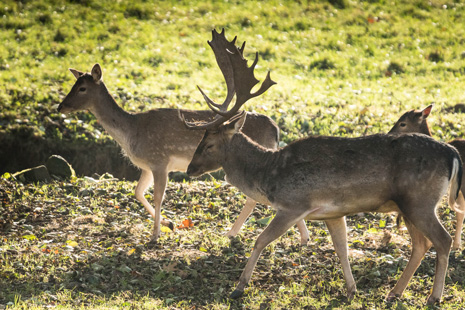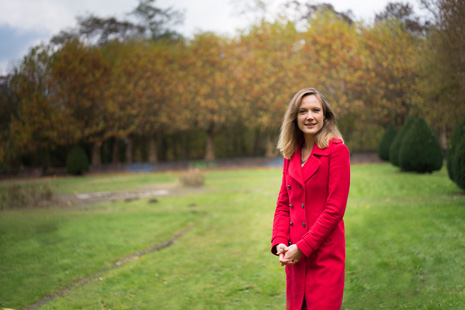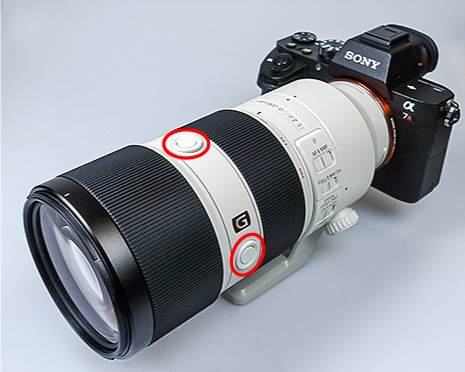Practice 3 Separating the autofocus function from the shutter button – AF On
The camera will activate the autofocus function when the shutter button is pressed halfway down in the default settings. When the focus has been confirmed and the shutter button is fully pressed, the picture will be taken. For general photography, this is a natural way to take your pictures (focusing and releasing are performed in one operation). However, there are situations in which you might want more options for how the shutter button works and how autofocus is performed.
Depending on your shooting subject and the shooting conditions, such as shooting distance and the movement of the subject, you may prefer that autofocus and the shutter button work separately. In this way, you can engage the autofocus operation on demand or you can instantly take a picture without the autofocus function, which may interfere with your composition and may change the pre-set shooting distance setting.
Autofocus function activated by pressing a custom button defined by the photographer, usually one of the buttons at the rear side of the camera, is often referred to as “Back Button AF.” Sony camera offers this feature as well, and there are several ways to customize the settings to fit your needs.
Below are typical scenes for which this feature is suitable:
Shooting moving subjects at a fixed shooting distance
You have set the focus once using autofocus, and can now wait for the right moment to take a picture without having to continuously press the shutter button halfway down. You can also avoid the focus distance shifting to the background accidentally.



Taking pictures of subjects that are temporarily hidden by obstacles
When using an ultra-telephoto lens, for example in sports photography or wildlife photography, you may encounter the problem in which other objects interfere and the focus is switched to objects in front of the main subject.



Catching a unique moment
By separating the autofocus activation from the shutter button, you can be ready to take a shot that can be only available for a matter of seconds. You can avoid possible shutter lag, which occurs when re-focusing, or an autofocus area that is not set on the target. The picture will be taken precisely, just as you press the shutter button.
This is also effective when you are shooting off-center subjects. Use the AF-On button to focus and lock the focus. The shutter button does not need to be kept pressed halfway down. You can take as many pictures as you like as long as the distance to the subject does not change, so that you never miss certain expressions or gestures in portrait photography. When you change the shooting position or you shoot with a wide-open aperture that provides a very shallow depth of field, you can re-focus instantly by pressing the AF-On button, if necessary.

When the subject is moving constantly, the focus can be kept on track by continuing to press the AF-On button. When the decisive moment arrives, you are ready to shoot. When the subject stops moving, you can lock the focus on the last position by releasing the AF-On button, and you can concentrate on the subject and the composition of your shot.

Macrophotography
When you shoot a subject that is not static, such as a flower swaying in the wind, the autofocus may try to re-focus and the focus may shift often. That makes it difficult to take pictures with your desired area in focus. Since the autofocus function is not activated by pressing the shutter button, you can set the focus distance in advance, and then wait for the subject to reach that point. In the case of the swaying flower, you can wait until the wind stops blowing.

We recommend that you use the AF-On button to set the focus to the close-up distance in advance, and then move the camera itself backward and forward to finely adjust the focus as you check it on the monitor or the viewfinder.

Turn off the Pre-AF function.
The [Pre-AF] function is a function in which the camera automatically adjusts the focus before you press the shutter button halfway down in still image shooting. Adjusting the focus in advance helps you to shoot quickly when you restart shooting. When using the [AF On] function, however, this may interfere with your focus control because it moves unexpectedly, regardless of your intensions. Since the [Pre-AF] function is turned on in the default settings, be sure to turn it off before using the [AF On] function.
Button to which the [AF On] function is assigned
Generally, the [AF On] function tends to be assigned to the AF/MF button. However, depending on your preferences, you can also assign it to other custom buttons, such as the C3 button, which gives you good access with your thumb and allows you to take advantage of the full functionality of the AF/MF or AEL button as it is.
You can also assign the [AF On] function to the focus hold button on the lens, which ensures a steady grip on both the camera and a larger lens while pressing the button.


Difference between [AF On] function and AF/MF button
The AF/MF button (without the [AF On] function assigned) works similarly to the [AF On] function. If you press the AF/MF button when shooting in autofocus mode, the focus is locked temporarily. The major difference is that the AF/MF button works only in AF-S (Single-shot AF) mode, while the AF-On button works in AF-C (Continuous AF) mode as well. When shooting moving subjects, set the focus mode to AF-C mode. While you are pressing the AF-On button, the focus continues to track the subject, and is locked once you release the button.